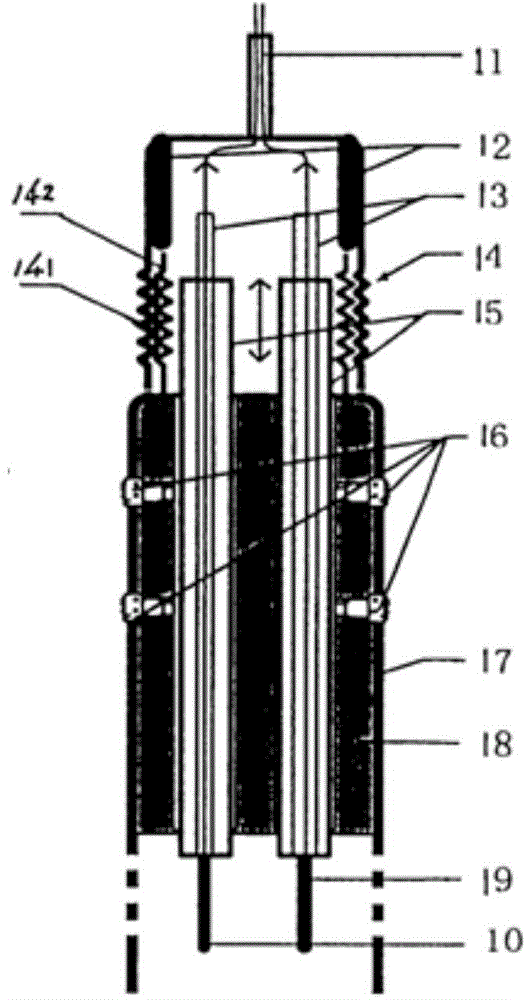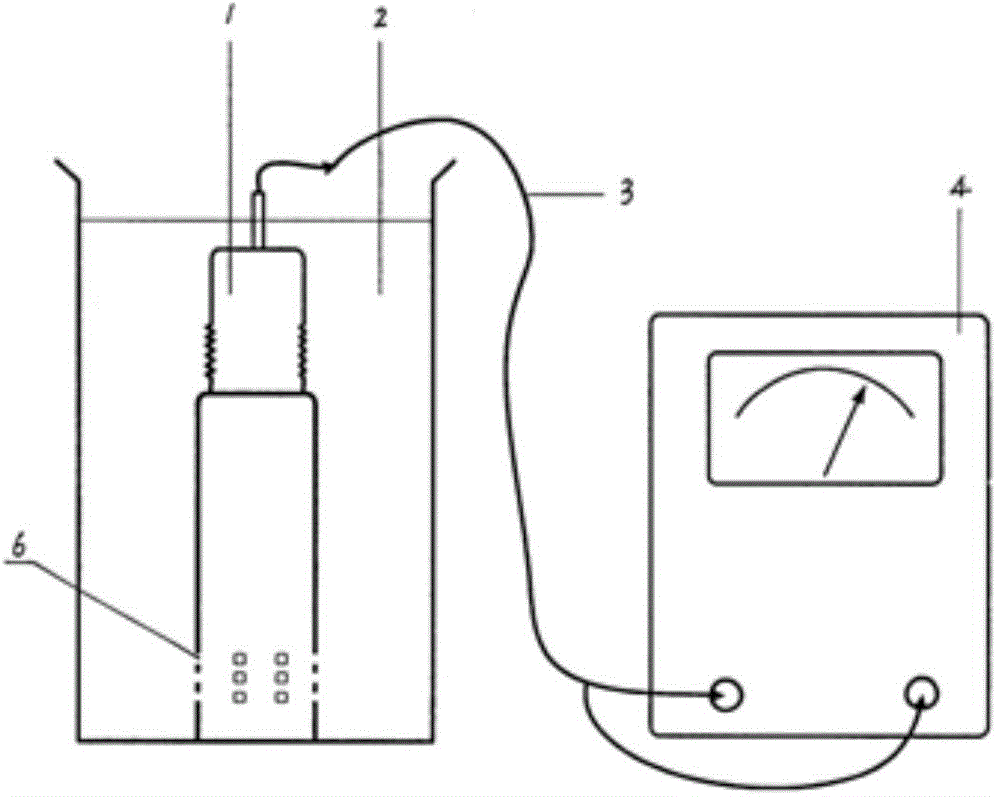Sensor for measuring content of reducing bacteria in sulfate
A sensor and bacterial content technology, applied in the field of measuring sensors, can solve the problems of inability to achieve in-situ measurement, long test cycle, etc., and achieve the effects of short test time, rapid measurement, and rapid on-site
- Summary
- Abstract
- Description
- Claims
- Application Information
AI Technical Summary
Problems solved by technology
Method used
Image
Examples
Embodiment Construction
[0011] Such as Figure 1~2 Shown, the present invention is by cable 11, waterproof rubber pad 12, electrode lead wire 13, electrode screw cap 14, electrode insulating tube 15, electrode tube fixing bolt 16, sensor housing 17, insulating seal 18, sensor electrode 19 and reference electrode 10 composition. The sensor electrode 19 and the reference electrode 10 are connected to the potentiometer 4 respectively, and an electrode insulating tube 15 is wrapped on the outside thereof. One end of the two electrodes protrudes outside the cylindrical electrode insulating tube 15, contacts with the solution 2 to be tested, and the other end passes through the cylindrical electrode insulating tube 15. The electrode lead wire 13 is connected with the cable 11, and the electrode insulating tube 15 is penetrated in the sensor housing 17, and an insulating seal 18 is formed between the sensor housing 17, and one end of the sensor housing 17 is a free end opening downward, and the side wall of...
PUM
 Login to View More
Login to View More Abstract
Description
Claims
Application Information
 Login to View More
Login to View More - R&D
- Intellectual Property
- Life Sciences
- Materials
- Tech Scout
- Unparalleled Data Quality
- Higher Quality Content
- 60% Fewer Hallucinations
Browse by: Latest US Patents, China's latest patents, Technical Efficacy Thesaurus, Application Domain, Technology Topic, Popular Technical Reports.
© 2025 PatSnap. All rights reserved.Legal|Privacy policy|Modern Slavery Act Transparency Statement|Sitemap|About US| Contact US: help@patsnap.com


